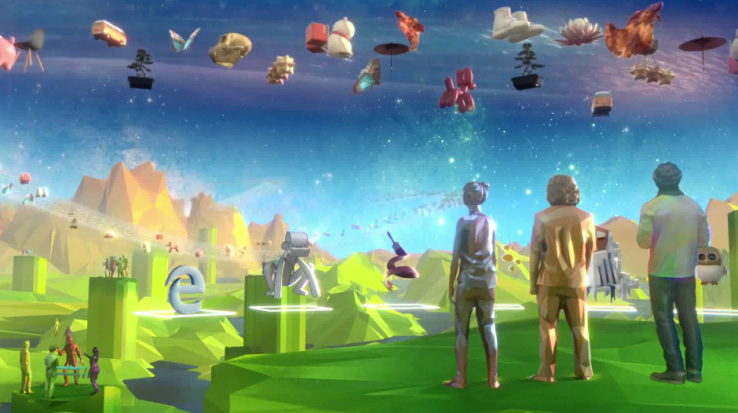

In a keynote presentation at Computex in Taipei and a couple of blog posts today, Microsoft doubled down on the mixed reality efforts spearheaded by Hololens – Windows 10, the company aims to show, is place to be when it comes to mixed reality.
Some clarification may be welcome here — just what is “mixed reality,” exactly? If you think about entirely computer-generated 3D environments in VR as one extreme, and plain vanilla reality on the other, mixed reality is… well, anywhere in the middle, really. Microsoft’s point is that Windows Holographic will support the whole continuum, from light reality enhancements to total immersion – and, crucially, facilitate natural interactions between them.
“Providing devices with the ability to perceive the world, breaking down the barriers between virtual and physical reality is what we call mixed reality,” wrote Terry Myerson, Microsoft’s EVP of Windows and Devices, in a blog post. “Imagine wearing a VR device and seeing your physical hands as you manipulate an object, working on the scanned 3D image of a real object, or bringing in a holographic representation of another person into your virtual world so you can collaborate.”
No one had to imagine, of course: this shining future was illustrated in a 3-minute video by turns fanciful and practical as to how various types of augmented reality would soon interact. For instance, someone with a Hololens headset may scan and inhabit a physical space and begin interacting with it there. Another person, distant but connected using a VR helmet, can enter the space virtually and experience it that way. Yet another may be holographically present via what can only be called a holodeck.
Meanwhile, familiar things like virtual item shops and a chatbot assistant (shades of Clippy) make their appearance as indicators of a pervasive, and familiar platform: Windows 10, natch.
There is also to be, I am told, an on-stage demo in which two people do a little real-time virtual collaboration, but as I’m not lucky enough to be in Taipei today and the keynote isn’t being live streamed, we’ll add video of that whenever it becomes available.
Update: here’s a quick look at what was demonstrated.
I talked with Microsoft briefly about the effort, and it’s clear the company wants to capitalize on the goodwill and momentum (perhaps unexpected) that Hololens enjoys; It’s the rare successful (at least initially) “category creation” device. Positioning Windows 10 as the only place where one can truly expect to take advantage of the full gamut of reality-mixing is a prescient move as well; the VR platform wars are sure to be confusing and divisive, but Microsoft intends to make sure they take place on Windows.
The video shows a few things that aren’t real, but some are more real than others. In vain did I attempt to make a Microsoft representative place certain things, like the “next generation hand tracking” on a real-world roadmap. I did however learn the phrase “subject to future announcement,” which is a new one. (Evasive diction is one of the finer arts of public relations and is often indifferently done, but this phrase I approve.)
Microsoft also announced a number of partners with which it is pursuing its dream of mixed reality. Myerson listed a few:
Today we invited our OEM, ODM, and hardware partners to build PCs, displays, accessories and mixed reality devices with the Windows Holographic platform.
We are excited to be working with Intel, AMD, Qualcomm, HTC, Acer, ASUS, CyberPowerPC, Dell, Falcon Northwest, HP, iBuyPower, Lenovo, MSI and many others…
Just what exactly each plans to contribute remains to be seen. Really, so few people have experienced realities beyond just the original one that it’s hard to say what will and won’t be needed or desired should the concept break through to the mainstream at all.
Partners and interested developers are encouraged to come to convenient Shenzhen in the fall for Windows Hardware Engineering Community (WinHEC) conference — or Taipei, if it’s closer.

